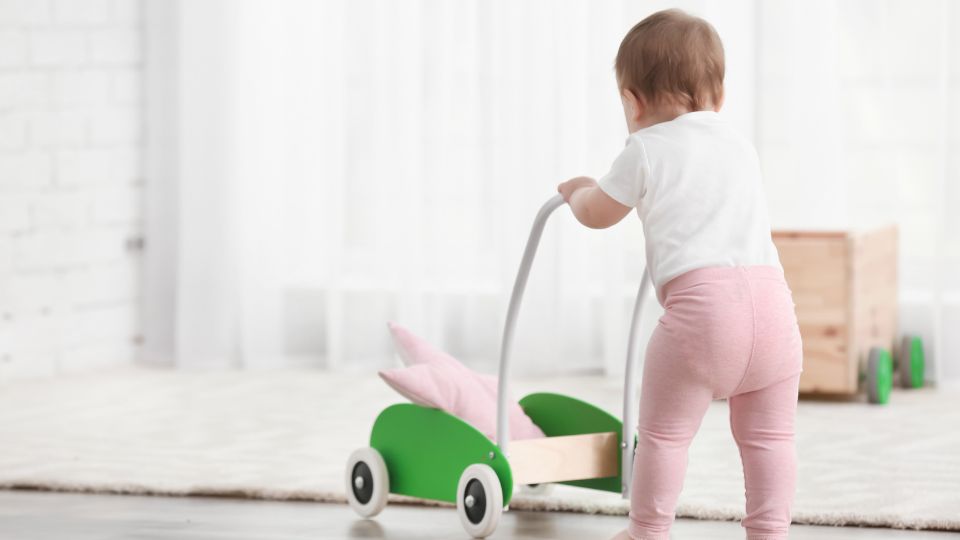Ensuring optimal mobility is crucial for the development and well-being of children, particularly those facing mobility challenges. Whether due to injury, illness, or developmental delays, fostering mobility at home plays a pivotal role in their daily lives. As caregivers and guardians, there are several effective strategies and supportive measures that can be implemented to enhance pediatric mobility and facilitate a nurturing environment.
Creating an Accessible Environment

The first step in promoting pediatric mobility at home is to ensure that the environment is safe and accessible. This involves:
Clearing Pathways:
Removing obstacles and clutter that may hinder movement, such as furniture or loose rugs, to create clear pathways. Our dedicated approach involves clearing pathways for children to achieve their full potential through a holistic array of strategies. From meticulously tailored environmental adjustments to proactive physical activity encouragement, we foster an atmosphere of empowerment and support.
Adaptive Equipment:
Introducing adaptive equipment like walkers, wheelchairs, or canes, tailored to the child’s needs and abilities. Our commitment extends beyond conventional therapies to include a diverse range of specialized tools and devices. Each piece of adaptive equipment is meticulously selected to complement individual needs, facilitating enhanced mobility and independence for children in their own homes.
Modifying Home Layout:
Rearranging furniture and fixtures to minimize barriers and make essential areas (like bedrooms, bathrooms, and play areas) easily accessible. Our approach involves meticulous planning and thoughtful modifications to ensure every corner of the home supports the developmental needs of children. From strategic placement of furniture to optimizing spatial arrangements, we aim to create an accessible haven where children can move freely and safely.
Encouraging Physical Activity
Physical activity is essential for children’s overall health and mobility. Incorporating regular exercise routines and activities can significantly contribute to their mobility:
Structured Exercises:
Working with healthcare professionals or physical therapists to develop exercises and routines tailored to the child’s condition and abilities. Our approach integrates tailored exercise programs designed to strengthen muscles, improve coordination, and enhance overall mobility. Each exercise regimen is carefully crafted to meet the unique needs and abilities of every child, ensuring progressive and sustainable development. Through systematic guidance and supportive coaching, we empower children to build foundational skills essential for navigating their daily activities with confidence. By promoting consistency and positive reinforcement, we strive to instill a lifelong commitment to physical well-being, setting the stage for a future filled with movement and vitality.
Fun and Playful Activities:
Integrating play activities that encourage movement, such as dancing, playing catch, or using indoor trampolines or therapy balls. Our approach integrates a diverse array of engaging exercises and games designed to stimulate movement, improve coordination, and boost overall physical well-being. From interactive obstacle courses to creative movement sessions, each activity is tailored to meet the developmental needs and interests of children, promoting enjoyment while achieving therapeutic goals. By fostering a supportive and inclusive environment, we encourage children to explore their potential in a lighthearted and nurturing atmosphere. Through these activities, we aim to cultivate a lifelong love for movement and empower children to embrace their abilities with joy and purpose, laying the foundation for a vibrant and active future.
Outdoor Exploration:
Facilitating opportunities for outdoor play and exploration, which can aid in strengthening muscles and improving balance. By embracing the natural world as a playground for growth, we aim to inspire children to discover their capabilities while enjoying the fresh air and freedom of outdoor spaces. Through guided exploration and supportive supervision, we ensure that each outdoor experience is safe, enriching, and tailored to the individual needs and interests of every child. By nurturing a love for nature and physical activity from an early age, we empower children to develop lifelong habits of active living and exploration, paving the way for a healthy and fulfilling future.
Providing Supportive Care

Supportive care is integral to nurturing pediatric mobility and ensuring children feel empowered and encouraged:
Encouragement and Motivation:
Providing positive reinforcement and encouragement during mobility exercises and daily activities.
Assistive Devices:
Utilizing assistive devices like handrails, grab bars, and supportive seating arrangements to enhance safety and stability.
Educational Resources:
Educating family members, caregivers, and even peers about the child’s condition and the best ways to support their mobility needs.
Implementing Daily Routines
Establishing consistent daily routines can foster independence and confidence in children with mobility challenges:
Daily Mobility Practices:
Incorporating mobility exercises and activities into daily routines, such as morning stretches or bedtime relaxation exercises.
Nutritional Support:
Ensuring a balanced diet rich in essential nutrients to support overall health and energy levels needed for physical activities.
Rest and Recovery:
Allowing adequate time for rest and recovery between activities to prevent fatigue and promote muscle strength development.
Seeking Professional Guidance
Consulting with healthcare professionals, therapists, and mobility specialists is essential for developing personalized strategies and ensuring effective support:
Medical Evaluation:
Regularly scheduling medical evaluations to monitor progress and adjust mobility strategies as needed.
Therapeutic Interventions:
Exploring therapeutic interventions such as physical therapy, occupational therapy, or speech therapy to address specific mobility challenges.
Community Resources:
Connecting with local support groups, advocacy organizations, and community resources that offer guidance, support, and educational opportunities.
Conclusion
Promoting pediatric mobility at home requires a multifaceted approach that encompasses environmental modifications, physical activity encouragement, supportive care, consistent routines, and collaboration with healthcare professionals. By implementing these strategies thoughtfully and consistently, caregivers can create an empowering and nurturing environment where children can thrive and achieve their full mobility potential. Together, we can support every child in taking confident and supported steps toward a brighter future. Contact us today at Physio Home, located in Ras Al Khaimah, United Arab Emirates, to learn more about promoting pediatric mobility at home.

